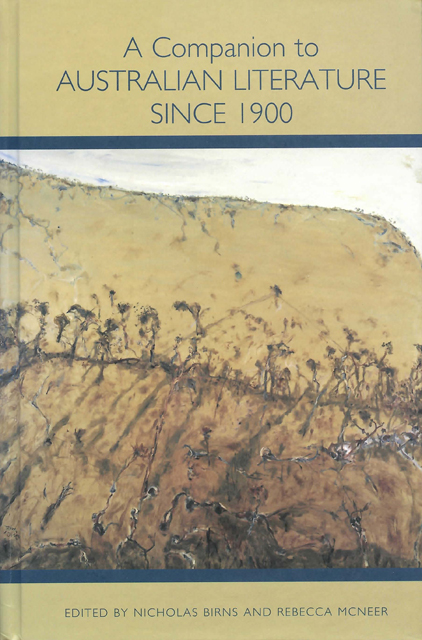Book contents
- Frontmatter
- Dedication
- Contents
- Chronology of Main Events in Australian History, 1901–2005
- Acknowledgments
- Note on the Cover Illustration and Artist
- Introduction
- Part 1 Identities
- Part 2 Writing Across Time
- Part 3 International Reputations
- Part 4 Writers and Regions
- Part 5 Beyond the Canon
- Notes on the Contributors
- Index
28 - Australian Children’s Literature
Published online by Cambridge University Press: 10 March 2023
- Frontmatter
- Dedication
- Contents
- Chronology of Main Events in Australian History, 1901–2005
- Acknowledgments
- Note on the Cover Illustration and Artist
- Introduction
- Part 1 Identities
- Part 2 Writing Across Time
- Part 3 International Reputations
- Part 4 Writers and Regions
- Part 5 Beyond the Canon
- Notes on the Contributors
- Index
Summary
Literature for Children has Flourished in twentieth-century Australia, largely within the sphere of influence of Britain and more recently the United States. The Australianness of this literature manifests itself in serious attempts to lay out for older child readers a distinctively Australian mythos by drawing on white colonial and indigenous stories, and for younger readers, in exuberantly comic celebrations of the eccentric, disgusting, and outrageous. For the first half of the century, Australian children’s literature follows a general line of development from its nineteenth-century colonial origins, with the superbly disrespectful exception of Norman Lindsay’s The Magic Pudding. In the second half of the century, many Australian books for children follow British and American trends: in realist fiction toward the adolescent problem novel and in fantasy toward the high heroic quest. The taboo-smashing short story and novel for younger readers, a literary form pioneered by Australian writers, promises a significant contribution to international children’s literature in the formation of a new genre. More deeply Australian in theme are the timeslip novels that look into the white Australian past to investigate contemporary mores. The counterpart in the second half of the century to the humorous questing of The Magic Pudding is Patricia Wrightson’s serious quest trilogy, the Wirrun books. With equal claim to being the most Australian of Australian works for children as Lindsay’s, Wrightson’s comes the closest yet to an unsentimentalized vision of what it might mean to be a child of this most ancient of lands.
Up until 1877, most children’s literature with an Australian setting was written for a British rather than Australian audience. It was based on information drawn from brief visits from Britain or derived from other books or from uninformed invention. The start of a genuinely Australian children’s literature (as opposed to a colonial subset of British children’s literature) may be dated to 1877, when the first book for children by a writer born in Australia was published, Robert Richardson’s Black Harry; or Lost in the Bush. The books title sums up its story-line: two boys become lost in the Australian bush and are rescued by the Aboriginal tracker, Black Harry.
- Type
- Chapter
- Information
- A Companion to Australian Literature since 1900 , pp. 417 - 428Publisher: Boydell & BrewerPrint publication year: 2010



